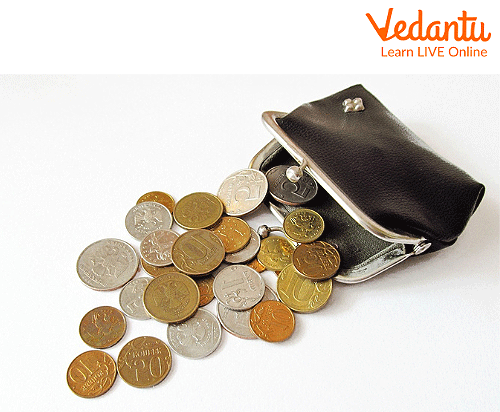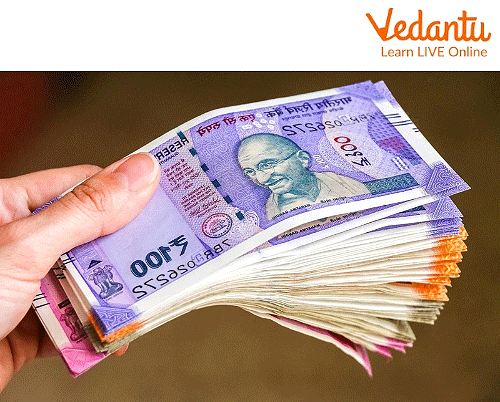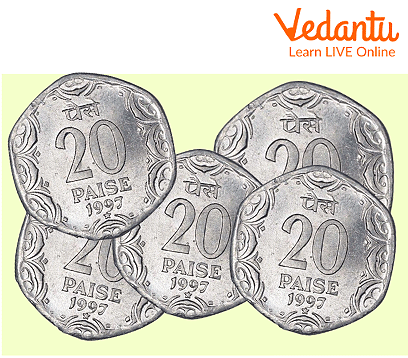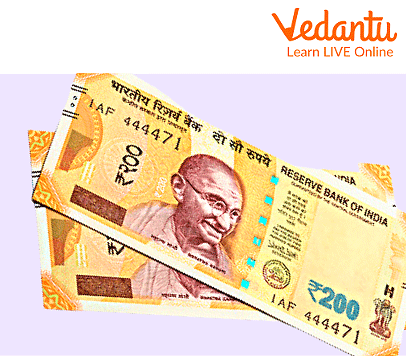




How to Identify and Use Indian Coins and Currency Notes
In mathematics, money can be any form of currency, including notes and coins that are used to purchase goods and services. The national currency of India is the rupee (Rs), and all transactions are carried out using this currency. We all deal with money on a daily basis in some capacity, and to reliably manage that money, we often rely on our math skills.
Coins and Currency Notes
The Middle English word currant, which means "in circulation," is where the word currency first appeared. Usually issued by a government and commonly accepted as a method of payment at face value, money comes in the form of coins or paper.
Currency Notes and Coins
Coins: The sizes and shapes of coins occasionally vary. The one-paisa to twenty-paise coins are no longer in circulation. The most common coins in circulation are 50-paise, 1-rupee, 2-rupee, and 5-rupee coins.

Coins
Currency Notes: These currency notes occasionally alter in terms of their shapes, sizes, and designs. For the 1-, 2-, 5, 50, 100, 200, 500, 2000-rupee denominations, coins and notes are both accepted. Notes for one and two rupees are no longer often found. Notes in the denominations of five, ten, twenty, and fifty rupees are currently available.

Different Currency Notes
History of Indian Currency Notes and Coins
Money has long since replaced bartering as the principal means of exchanging commodities and services in the modern world. The official money of India is the Rupee. Although there is 100 paise in a rupee, the lowest value coins in circulation as of 2019 are one rupee coins. The Reserve Bank of India has power over currency issuance. The Reserve Bank of India Act, 1934, serves as the basis for the Reserve Bank of India's function in currency control.
Importance of Money in our Daily Life
Money is a type of legal tender, which is an accepted form of payment by the government; in most cases, coins and notes qualify as legal tender.
Both the purchase of products and services as well as the repayment of debts are acceptable.
It may be used to determine the worth of any commodity and provides information on the market price of any manufactured goods. Ex: A pen costs Rs. 5 per unit. (That is, a pen is valued or has a market value of Rs 5)
It serves as a benchmark for postponed payments, that is, for repaying previously borrowed loans and debts.
It must be transportable, i.e., it must be simple to carry and move around.
Conclusion
Any type of currency, including bills and coins used to make purchases of products and services can be referred to as money in mathematics. It may be used to determine the worth of any commodity and provides information on the market price of any manufactured goods.
Indian Money Worksheet for Grade 1 (Solved Questions)
Example 1: How many Will make Rs 10?

Ans: As we know:
\[\begin{array}{l}1 Rs = 100paise\\10Rs = 1000paise\\5 \times 20paise = 1Rs\\50 \times 20 paise = 10Rs\\\\{\rm{As we know 5, 20 paise coins will make Rs 1}}{\rm{.}}\\{\rm{So, for making 10 Rs we need 50, 20 paise coins}}{\rm{.}}\end{array}\]
Example 2: Which note is this?

Ans: This is a 200 Rs note.
Example 3: How many Rupees are there in 1 Paise?
Ans: There are 100 paise in 1 Rupees.
FAQs on Coins and Currency Notes: Key Concepts, Types & Examples
1. Who is involved in coin and currency production?
The Reserve Bank of India is the only institution authorized to print currency.
2. Is a coin considered money?
Paper money in the form of notes and coins is referred to as currency.
3. Currency notes and coins are called as____.
Legal tender and fiat money.

















